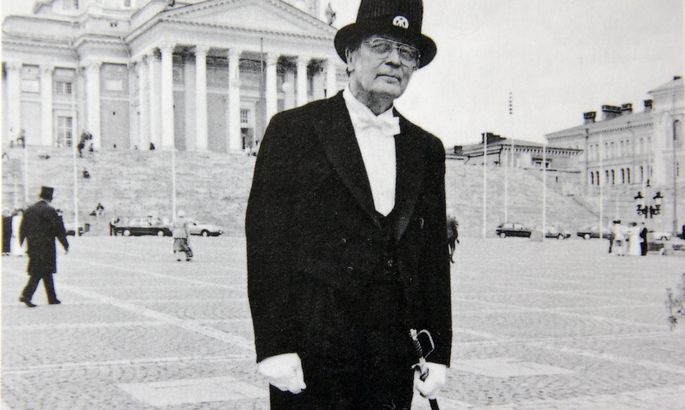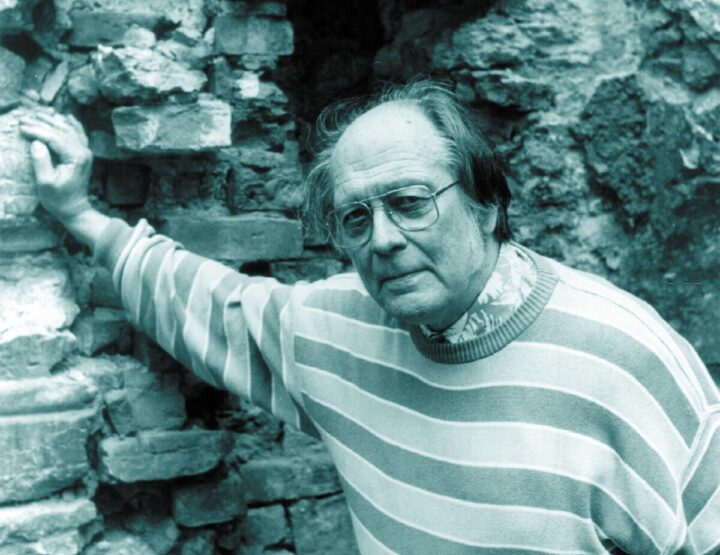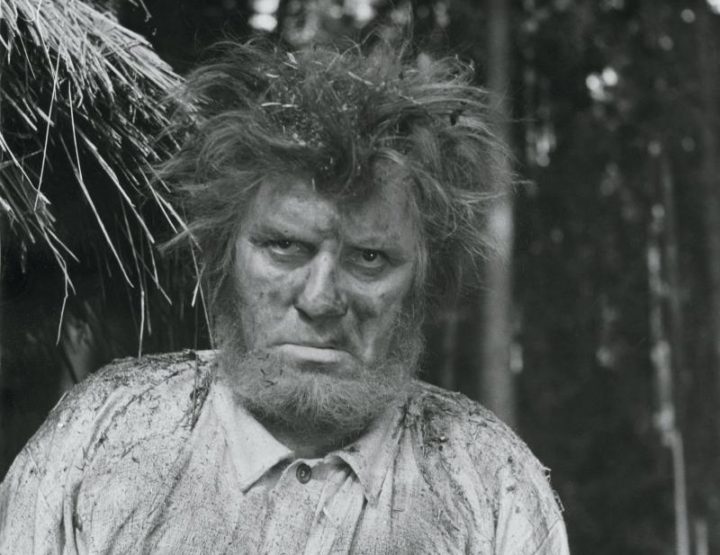Kerttu Wagner
Die historischen Romane von Jaan Kross
Am Beispiel einer Untersuchung der deutschen und englischen Übersetzungen von Professor Martensi ärasõit (1984)
[The historical novels of Jaan Kross. Exemplified by an investigation of the German and English translations of Professor Martensi ärasõit {Professor Martens’ Departure} (1984)]
European University Studies, Ser. XVIII (Comparative Literature), Vol. 97.
Frankfurt/Main etc.: Peter Lang, 2001. 290 pp
The book under review here, a University of Göttingen PhD thesis, is certainly one of the best scholarly treatments of contemporary Estonian literature, and – surprisingly, indeed mind-boggingly enough – the first one to deal exclusively with the œuvre of Jaan Kross. Contrary to its title, it is primarily a micro-investigation of the translations of Professor Martensi ärasõit (Professor Martens’ Departure) into English and German; the general treatment of Kross’ historical novels is, although more than merely coincidental, not the focus of the work.
Unfortuntately, this is not really a book. No book published with Peter Lang really is; in its general series at least, this is a ‘vanity press’ in the sense that there is no editorial selection process; all theses successfully defended in a German university are accepted, provided the author pays (actually more than) the costs of printing, distribution, and some very modest marketing. He or she also needs to supply the photo-ready text; this often leads, as unfortunately in the present case, to a book that is miserably layouted and difficult to read.
In other words, theses are published with Lang that could not find a real press. In Kerttu Wagner’s case, it is clear why that is so – precisely because in its present form, this is a thesis, not even a scholarly book, let alone one with any sort of appeal beyond university libraries. Yet, this is a particular pity, because a genuine publishing house could have suggested the cuts, changes, and streamlining necessary to make a book out of this.
We really have three rudimentary books in one here: First, a linguistic-literary theory thesis in which Martens serves almost as an example; second, an extremely detailed analysis of the translations of Martens into English and German; third, an account of Kross’ novels generally and Martens specifically, with a study of their translation and reception. What is notable is that the – certainly sophisticated – first part, the theoretical framework, stemming from the specific Göttingen school of “transferorientierte Übersetzungsanalyse” headed by Armin Paul Frank, is, for the argument of the thesis, not necessary at all; exactly the same kind of analysis could easily have been done well before the rise of translation theory.
Only two translations are compared, those by Anselm Hollo into English and by Helga Viira into German. (That these are serially dealt with and not synoptically is only understandable from an easy-layout point of view.) This is a slim base indeed, and perhaps the one element I would have found questionable when evaluating the thesis value of the work. It is especially odd as the Finnish translation of Martens by Juhani Salokannel and the French one by Jean-Luc Moreau are considered only in passing, and yet it becomes clear that they are probably very good. (It seems that Moreau’s is easily the best; his remarks on the novel are also among the best to be found.) For Wagner, Hollo comes out worse than Viira, because of his greater liberty with the text and because his lesser familiarity with the Estonian context and language leads him to miss characterizations in the novel which Wagner sees as essential. I myself would say that, while these nuances are interesting in a scholarly perspective, the result of Wagner’s investigation actually demonstrates that even the Hollo translation is quite good.
As to the details of Wagner’s work, although its literary merit is questionable, the formal German is excellent and spelling mistakes are far fewer than I have seen in many a Lang publication. The biggest quality problem lies in the usually not referenced historical background notes on persons and events, which are sometimes too blatantly culled from Viira; Wagner is clearly no history expert. The problem is that a translator must be ‘better’, in the sense of language and also of subject competence, than the author of the original text, and that the author of a book on translation theory must go even one further level up. This is a very serious problem in the case of such an ‘elitist’ writer as Jaan Kross, whose demand on his reader’s language skills and education is only exceeded by his own (the passages on the Kingdom of Westphalia in Martens, for instance, are just stunning). Wagner’s bibliography is unfortunately not very helpful, because it is too differentiated into segments, and the fact that Kross translations are listed without the name of the translator is downright bizarre. It is also strange for a contemporary thesis, and especially one so motive-oriented as this, that Wagner has apparently made no attempts to talk to Kross, Hollo, Viira, or anyone else.
What is the interest of Kross’ novels outside of Estonia, other than supplying proof that the ‘historical novel’ (however understood) is not dead? Are his novels so appealing independent of or due to their Estonian subject and message? Independent of or due to their moralistic didacticism? The ‘task of the author’ discussions, by Kross, by Wagner, and by several reviewers, in any case, strike one as absurdly out-of-time; of course, the author has no task whatsoever, other than writing a good book.
Goya’s well-known paintings and engravings from the Napoleonic invasion of Spain have a very specific, time-bound message, which is anti-French. They also have a removed and timeless one, which is anti-War. And especially the paintings have a general and also timeless appeal as great art that go beyond any ‘statementship’. The same holds with Kross’ books: both the symbolic (the critique of the Soviet occupation of Estonia) and the nation-building aspects will wane in importance, and are already doing so because all this is fast becoming history, but his psychological deliberations about conformism will remain valid.
And here, what is so valid is not the moralism regarding compromise, but the display of the compromising person, a display accomplished with great mastery. The ‘public relations value’ of Kross’ novels for Estonia today and in the future lies precisely in their quality as such, which carries, so-to-speak, the message of Estonia on the side. Martens is an excellent example of this: Professor Martens’ problem is that of the compromiser with the powers that be; better still: of the expert, of any expert, as whore. Ethnic identity is only one aspect of this, and perhaps the one that appears the most artificial. “What Martens in the end misses is our full esteem. Respect he deserves anyway,” says Kross in a self-interpretation. But the question is, on what basis Martens – the Martens of the novel, independent from whatever its author later says about him – should be judged to begin with, especially in such highly problematic, constructed areas as nationalism and ethnic responsibility.
This is not to deny, of course, that Kross’ novels also serve as cultural ambassadors with their historical message and description, but here, too, what might have been a forte in the past will probably be a weakness in the future, in that the more overt historical judgment (which during times of occupation surely was of high value within Estonia) will become a turn-off and the quieter description appealing. The great quality of Väljakaevamised (Excavations) (not out in English yet, but in German), which for me is probably Kross’ best novel so far, although I recognize the qualities especially of Keisri hull (The Czar’s Madman) lies precisely in the absence of didacticism. If there is any book that raises both understanding of and sympathy with the Estonian plight during Soviet occupation, this completely non-whiny, modest, detached yet compassionate book surely is it. Here, all heavily symbolic passages have a clear role and are made very explicit and thus avoid didacticism. It would thus appear that the translation of Väljakaevamised into English should be a top priority of Estonian foreign cultural policy, given its acknowledged mission. Why, after ten years, this has not been accomplished, is really beyond imagination? (But then, even the genuine Estonian ‘national novel’, Anton Hansen Tammsaare’s five-volume Tõde ja Õigus (Truth and Justice), has been allowed to go out of print in German, and has never been published in English…)
Kerttu Wagner’s account reminds us of the overwhelming quality of Jaan Kross’ historical novels, and it underlines the need for further serious scholarly investigation. Her analysis is of considerable interest for translation experts; for Estonian Literature scholars, the work is a must. For everyone, it can serve as a reminder that it is worthwhile to read, or reread, Professor Martens’ Departure, whether in the original or in translation.
Die Historische romane von Jaan Kross
By Wolfgang Drechsler
–
Share:




